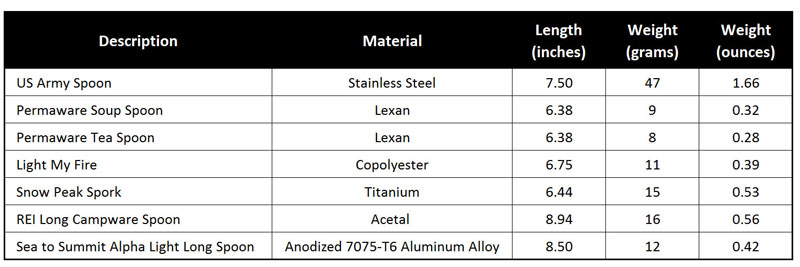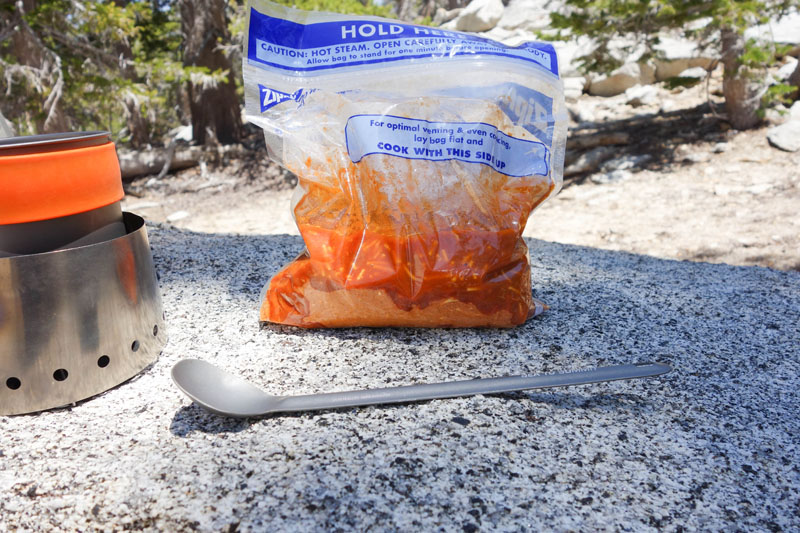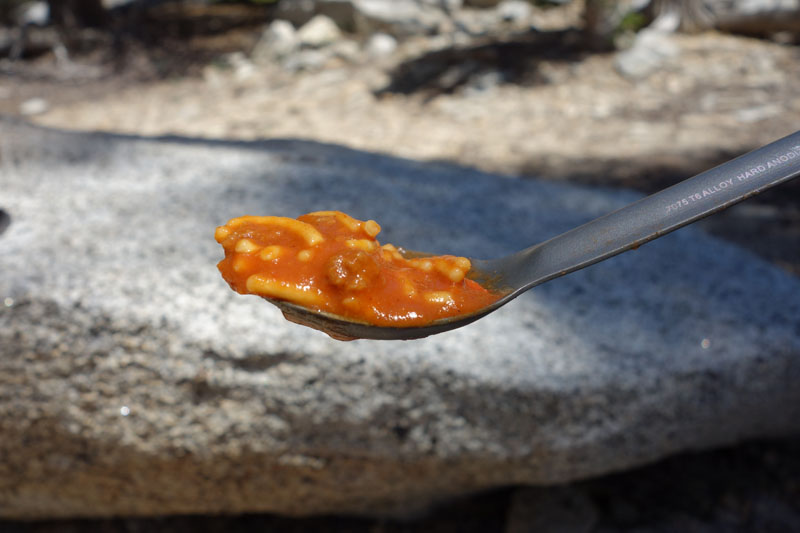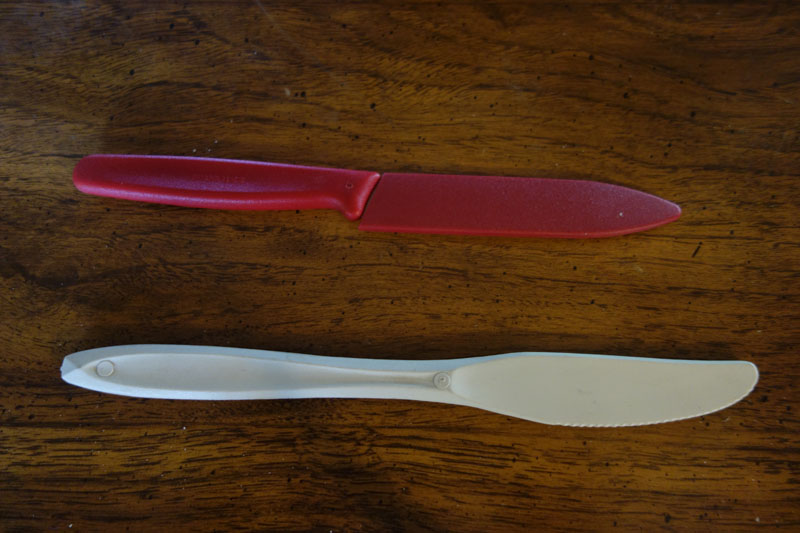
Two things I learned a long time ago was
- a spoon is the only eating utensil one needs for backpacking
- if you pare away at the ounces you will reduce your pack weight by pounds.
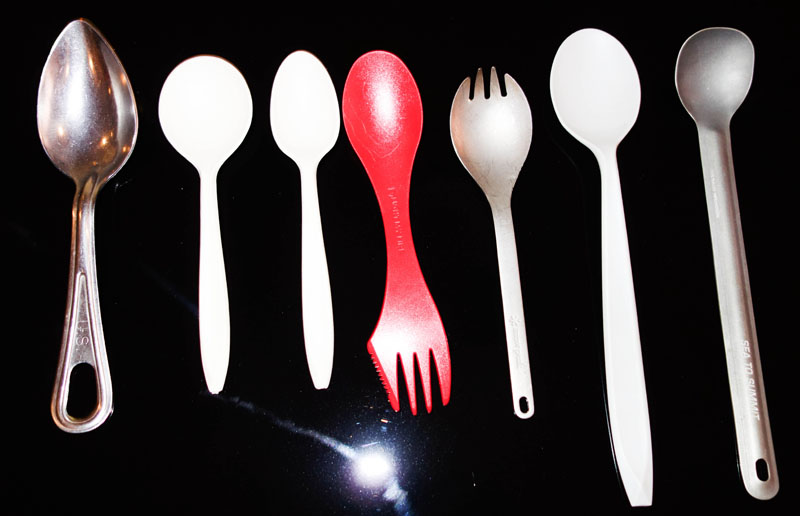
Above (left to right)
1. US Military spoon
2. Pareware soup spoon
3. Pareware teaspoon
4. Light My Fire spork
5. Snow Peak spork
6. REI Campware long soup spoon
7. Sea to Summit Alpha Light spoon
These are the spoons I have used over the years.
Below is a table of specifications for the spoons.
When I was in high school I just grabbed a set of utensils from our kitchen (spoon, fork, and knife) for my backpacking trips. Most of these trips were not long hikes, as the purpose was to get away from the popular fishing spots and hike to more remote areas. The goal was to catch and eat trout. So the set of utensils met my needs.
When I got out of the military in 1971, I used a set of US Military issue cutlery. Since I was hiking long distances and fishing became secondary, I realized the fork and knife were unnecessary in weight and function and I soon sent them home.
When I backpack, I am not cooking – that is I am mostly preparing instant or freeze-dried foods. So the fork and knife aren’t necessary. Even if one catches trout, if properly cooked, the meat is easily removed from the bones.
Through the 70’s and into the 80’s I was constantly paring down the weight of individual items (yes we were light backpackers in those days too). I found a set of Pareware Lexan utensils. Not sure where I purchased them, probably from REI. I bought complete settings for tent camping and a couple extra spoons (soup & tea) for backpacking. Both weighed less than 10 grams each, compared to 47 grams for the military spoon. After a few trips, I found the soup spoon was best for backpacking. During this time I tried a couple of bamboo spoons, which I really wanted to like, but I found the bowl of the spoons were too shallow – just didn’t hold as much food as a similarly sized spoon.
One thing I dislike about the Pareware Lexan utensils is the pebbly finish. They had so many microscopic indentations, which made them somewhat difficult to clean.
In 2008, I was shopping for backpacking gear for my son, Joe. If found a 4-pack of these cute little Light My Fire sporks for under $10. So I kept two, but ended up hating them although they cleaned up easier than the Pareware spoons. At 11 grams, they are heavier than the Pareware spoons.
Finding that these Light my Fire sporks cleaned up easier than my Pareware, I soon bought a Snow Peak Titanium spork. By this time I was no longer cooking food in my pot, but pouring hot water into my Ziploc freezer bag and letting the food cook in the bag, which usually takes 8 – 10 minutes. The kitchen was slowly moving to lightweight perfection. The titanium spork cleaned up easier than everything, except the old stainless steel military spoon. But I found that all the spoons and sporks were too short to eat out of a one quart freezer bag. So I started searching for a longer spoon – and also found the points on the spork were not useful and could punch a hole into the bag.
I found a long handled spoon at REI that was similar in construction to the Lexan spoons. The long handle was perfect, but again not the easiest material to clean. Finally I found the perfect spoon. The long handled Sea to Summit Alpha Light Long spoon, made from anodized aluminum alloy. This spoon is almost ½ inch shorter than the REI spoon, but the bowl of the spoon is angled making it perfect for eating out of a freezer bag. Plus it cleans up easy. Perfection!!
Packing Your Spoon
I often see people posting on the Internet asking about spoons that fold or compact, so they are small enough to fit into a backpacker’s cooking pot. Most lightweight backpackers use pots that are too small to hold any standard sized backpacking spoon. It seems that compactness trumps function for them. Don’t buy a spoon with the primary purpose of fitting it into your cookware. I have looked at these spoons – they are flimsy and not easy to hold. Buy a spoon that meets three criteria:
- It works well as a spoon.
- It cleans easily.
- It is light.
And if it doesn’t fit into your pot, store it in your food bag!! You don’t need your spoon, unless you are getting into your food bag for food or drink mix. Problem solved!
Knives
I carry an itty bitty knife, and it isn’t good for cutting food such as cheese or salami, or for spreading things like margarine or peanut butter. You can use the handle of your spoon for this. In the past I sometimes would take a Pareware Lexan spoon (11 g or 0.4 ounces) for these tasks. Recently I bought a Victronix Little Vicky paring knife (23 g or 0.81 ounces). This thing is so light and functional that I have started bringing more fresh fruit, salami and/or summer sausage, and spreads on my trips.
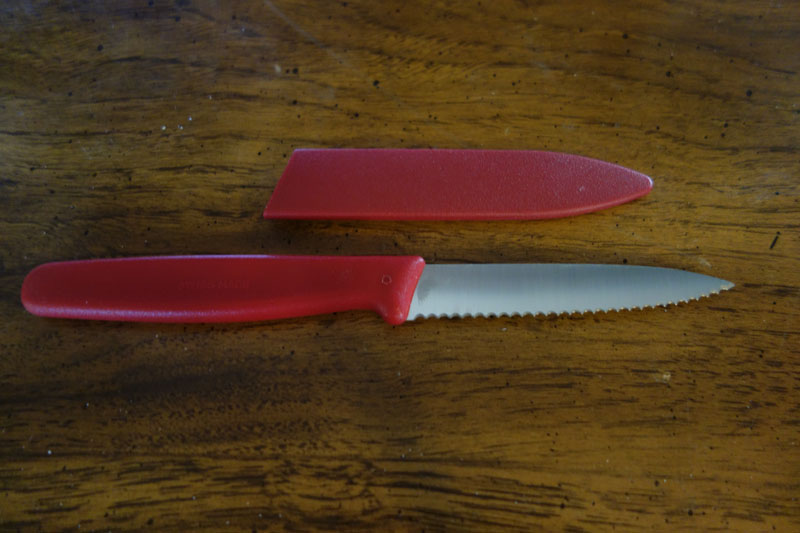
For more thoughts on knives click here
